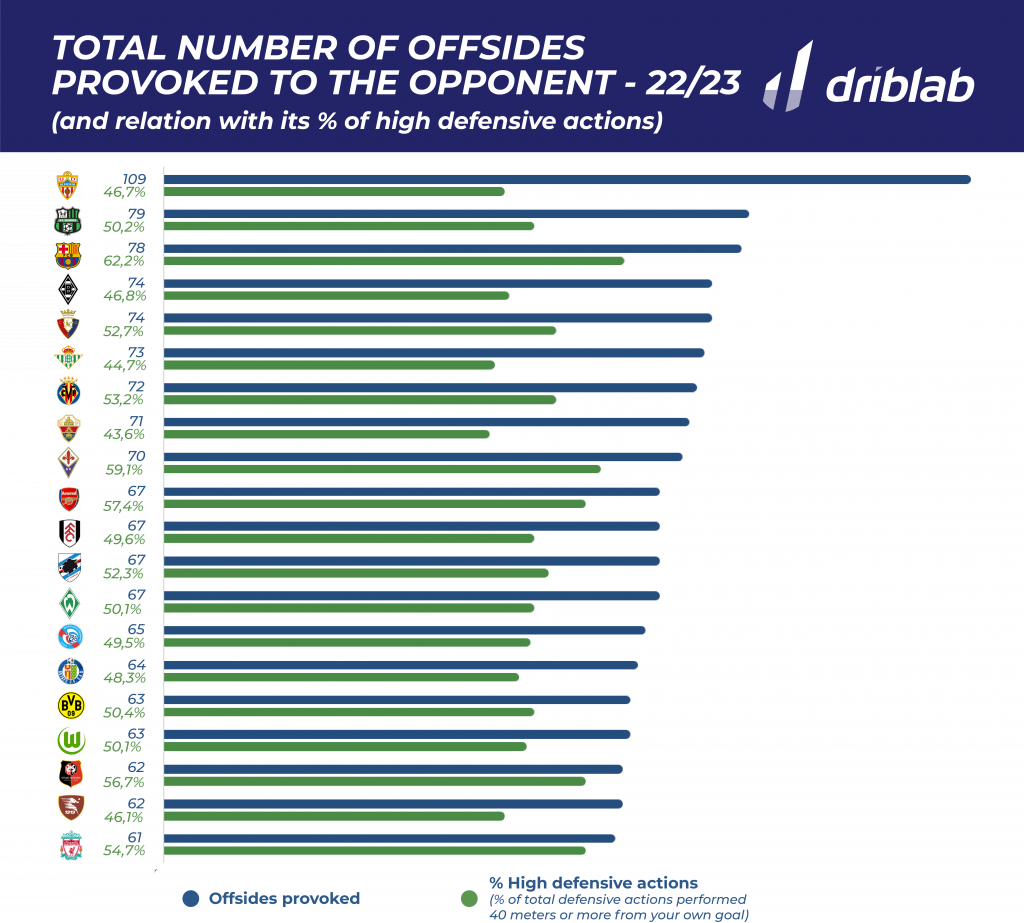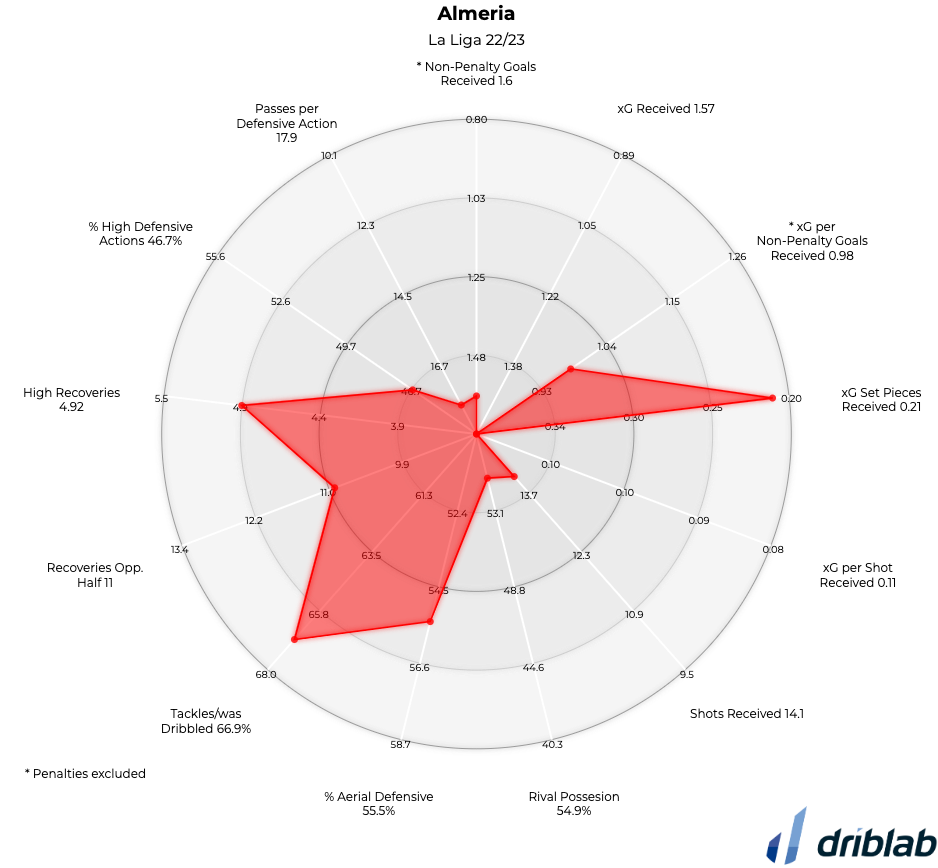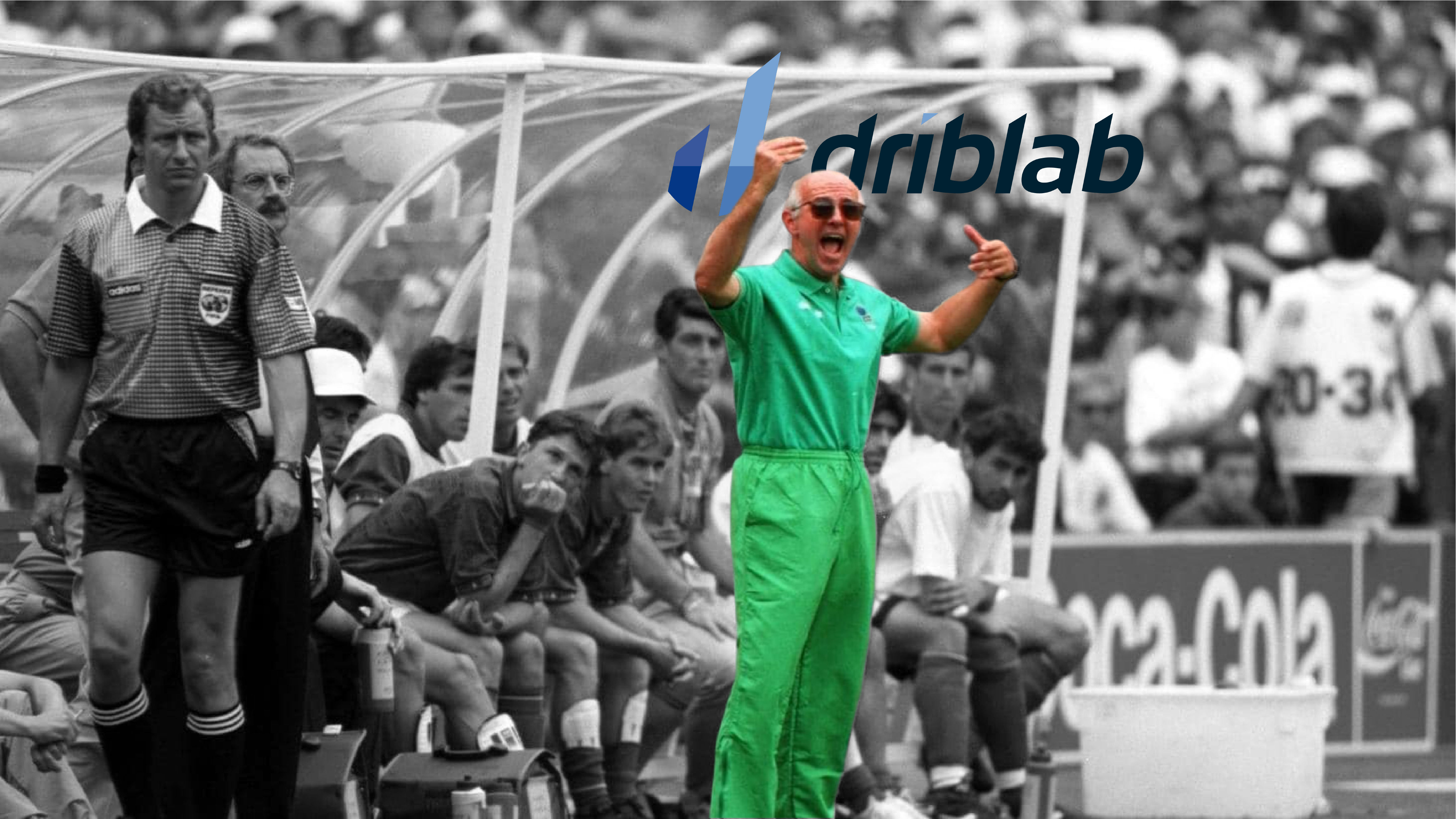Offside, the famous rule 11 of the manual introduced in 1883 to prevent players from taking advantage of the space between the last defender and the goalkeeper, has always undergone an evolution in favor of the spectacle. For example, the type of pressing designed by Arrigo Sacchi at the end of the 1980s led to the creation of positional offside, which allowed players who were not involved in the play to be in a legal position even if they were advanced. Sacchi had managed to take advantage of this by allowing players to be offside if they were caught many meters away from the ball, even if the play left them with no chance of playing it.
Nowadays, many of the collective analyses are usually composed of a multitude of metrics focused on understanding where each team steals the ball, how they press, where they place their defensive line or where their ball steals occur. All these metrics or concepts can give us an idea of the defensive style of one team or another, but sometimes we sometimes leave aside concepts that can also give us very useful information: how many fouls they commit, which could indicate the pace at which they want to play, interrupting the game more or less frequently, or in this case, the offsides they cause, an interesting indicator to add to the previous ones.

Let’s take a recent case. In the 2021-22 season, Jürgen Klopp’s Liverpool, who came close to the league title, gave offside to their opponents 144 times, 50 times more than the second, the champion Manchester City. A statistic that generally reflected where he defended and what attitude his defenders maintained when faced with an open pass. The success on many plays was extraordinary.
At present, among the 98 teams that make up the top five European leagues, Jose Mourinho’s AS Roma is the team that has caused the fewest offsides this season, with only 13. But undoubtedly, the most surprising thing happens in the first position, taking into account, moreover, that it is a team whose percentage of high defensive actions (it measures the % of defensive actions it performs 40 meters or more from its own goal) is far from the most dominant teams.

Rubi’s Almeria is the team, and by far, that causes more offsides in their rivals, without even performing 50% of their defensive actions in the last 60 meters of the field. For offside, the attitude of the defenders in the last line is even more important than the defensive height of the team. There is no doubt that there is a clear correlation between playing with the defense very high up and trying to steal the ball through anticipation but it does not have to be that way. A team’s defensive principles can mix a lower block and great coordination of the defensive line to step up when passing.

And what happens, on the other hand, with the teams that fall offside the most? Well, we’ll know more about them soon.
We are Driblab, a consultancy specialized in the statistical analysis of players and teams; our work is focused on advising and minimizing risk in professional football decision-making in areas related to talent detection and footballer evaluations. Our database has more than 200,000 players from more than 180 competitions, covering information from all over the world. Here you can learn more about how we work and what we offer.














